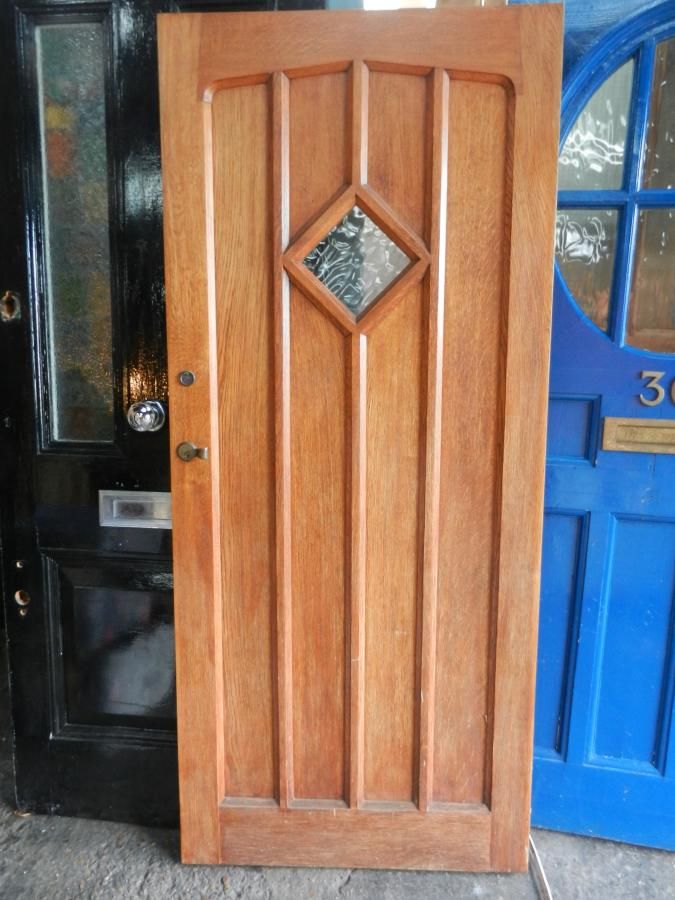I'm thinking of making some Tudor-esque curved/arched top doors for my home and I have seen a few period examples (example below) where the top rail is mortised into the stiles at an angle - like a kind of open haunched joint - does anybody know the proper name of this type of joint so I can research it? Or better still, how it is best achieved in a neat and good fitting way? Also, do you think on doors like this a cope and stick style joint is what produces the internal bead moulding or is that later applied like a trim or bolection trim? I ask because I'm also wondering the best way to achieve the joint of the muntins at the top rail where they join it at an angle or, in the case of the central muntin, at a "v-shape". There doesnt seem enough good info out there about period doors - or am I looking in the wrong places?
I intend to make a door similar to this except I will be fully glazing it between the muntins and not using a diamond shape central window

I intend to make a door similar to this except I will be fully glazing it between the muntins and not using a diamond shape central window




